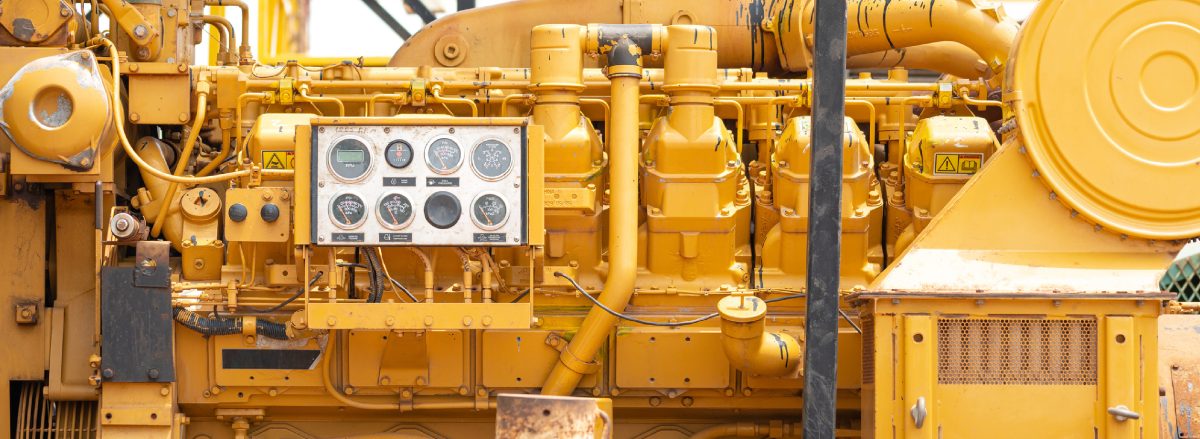Let’s talk about ash. As most mechanics will tell you, ash is a problem for all engine types. It accumulates as fuel, and lubricants burn off during the combustion process. The calcium and zinc in lubricant additives typically form ash because they don’t burn up. Instead, they develop into ash, which sticks to the sides of the combustion chamber in engines.
Ash is not inherently a bad thing. See, with ash, it’s all about finding the right level for your engine. Leftover ash acts only as a coating inside the combustion chamber. It can help prevent metal-to-metal contact and improve your engine’s working condition. But too much ash forms deposits. Over time, these deposits grow bigger and bigger and can begin to block up parts of an engine or lead to damage.
Today’s ash discussion will focus on how ash affects stationary natural gas engines. Natural gas engines (NGEs) are used in all different types of machinery, like natural gas compressors, electric generators, pumps, and indoor mechanical machinery. Stationary natural gas engines are typically found in large machines or plant operations. Here are some characteristics of stationary natural gas engines from Machinery Lubrication:
- Two or four-stroke engine design
- Can range from 100 HP to a maximum of 16,000 HP
- Can have up to 20 cylinders
- Can have sump capability ranging from 80 to 200 US gallons
- Can have engine speeds that range from 300 RPM all the way up to 2,000 RPM
These are just a few of the characteristics of stationary natural gas engines. As you can see, these engines can be used for a wide variety of work and range in power. That makes them highly versatile for many different industries. NGEs run on natural gas produced from sources like dry natural gas, raw sour gas, or even digester gas from landfills or sewage systems. Typically, natural gas is a lower-quality fuel than diesel or gasoline, but it’s also cheaper. Some of the advantages of using natural gas as fuel include:
- The burning process creates less soot, so you don’t need as many additives or lubricants. This characteristic also makes it more environmentally friendly because it helps reduce emissions.
- It burns much hotter than diesel and is more efficient than gasoline.
Stationary Natural Gas Engines
In a stationary NGE, ash accumulation has to be closely watched. One of the areas that is more vulnerable in stationary natural gas engines is the valves leading to the compression chamber. These valves regulate the fuel flowing into the compression chamber in the engine, where it mixes with the air to create the energy that powers the motor.
Valves look like an upside-down funnel. They have a thin spout at the top called the valve stem. This stem branches down to the broad valve face beside the combustion chamber. As the valve moves up and down, it creates a seal when it comes into contact with the compression chamber, which pushes the fuel through. As the fuel burns during this process, ash deposits in the valve. The ash coats the valve’s inside and offers protection from metal-to-metal contact. But what happens if there is too little or too much ash in the valve?
Valve recession occurs when there is too little ash to cushion the valve seat and face. This leads to increased metal-to-metal contact, which starts to wear down the valve seat and create a recession that will make it harder for the valve to seal off properly and reduce the life of the cylinder head. Eventually, the valve may need to be replaced entirely if the recession worsens.
Conversely, too much ash creates too much of an ash cushion, and deposits form within the valve. These deposits can also affect the valve’s sealing ability. If the valve cannot seal properly, fuel exhaust gas can enter the valve and damage it. That’s why monitoring ash accumulation and choosing the right lubricant products for your desired ash levels is essential.
Engine load also affects ash levels
Mechanics need to consider one more factor regarding stationary NGEs and ash accumulation – engine load. The force of the power produced by the NGE while it runs affects the ash accumulation in your engine. But how? Let us explain.
There is a butterfly valve to allow air to enter the engine. This valve controls the flow of air into the intake manifold. When the motor runs at full power, more air is needed to speed up combustion, creating positive air pressure. This reduces ash buildup. But if you turn down the engine power, the butterfly valve closes, creating a vacuum within the valve that traps more oil in the valve where it settles on the valve face, reducing the valve’s seal. You can view diagrams of how this looks here.
As you can see, there are a lot of factors that affect ash accumulation. It depends on the quality of natural gas you use, the type of lubricants, the type of valve or engine, and even how you run the machine. Operators and mechanics must remember this when choosing their lubricant and oil supplies. For example, suppose you consistently run your engine at half power. In that case, selecting low-ash lubricants and oils might be best since your machinery is already at risk of increased ash accumulation.
How can we help?
As a fuel and lubricant supplier, we know that finding the right products for your machinery is a big concern. Our team is highly experienced and can give you expert recommendations. We also offer oil analysis services if you’d like personalized recommendations based on samples from your equipment. Many of our customers who use our oil analysis services find it an excellent tool for getting insight into their machinery based on how they use it and what it needs to stay functional. Please get in touch with your Greg’s Petroleum representative to learn more about this program.
